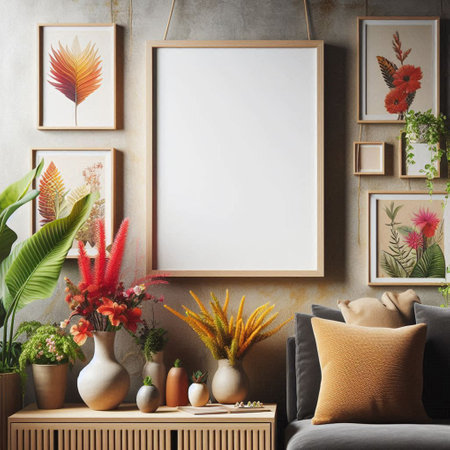Introduction to the Luo Pan
For many in the United Kingdom, the concept of Feng Shui has long been associated with creating harmonious living spaces and promoting wellbeing. At the heart of traditional Chinese Feng Shui lies a fascinating tool: the Luo Pan, also known as the Feng Shui compass. This intricate instrument, with its beautifully marked rings and compass needle, serves as both a navigational device and a symbolic map of spatial energies. The Luo Pan’s origins stretch back centuries in China, where it evolved from simple magnetic compasses into complex tools used by Feng Shui masters to analyse environmental energies and guide architectural decisions.
Recently, interest in the Luo Pan has grown among UK residents seeking a deeper understanding of Eastern approaches to space planning. As more homeowners, designers, and enthusiasts explore holistic and cross-cultural ways to shape their environments, the Luo Pan stands out for its blend of scientific precision and philosophical depth. Learning how to read a Luo Pan is not merely about mastering an ancient artefact—it’s about connecting with a broader tradition that values balance, flow, and intentional design within our homes and workplaces. Whether you are new to Feng Shui or keen to enrich your knowledge, understanding the Luo Pan opens up new possibilities for achieving spatial harmony in contemporary British settings.
2. Understanding the Structure and Key Features of a Luo Pan
Before you can confidently read a Luo Pan, it is essential to become acquainted with its unique structure and the terminology commonly used, particularly when adapted for a UK audience. The Luo Pan, often referred to as a Feng Shui compass, consists of several concentric rings, intricate markings, and a central compass needle. These elements work together to offer insights into spatial orientation and energy flow, making them highly valued tools in traditional Chinese geomancy.
The Main Components of a Luo Pan
Each Luo Pan is crafted with precision, featuring multiple rings (sometimes up to 40), each bearing specific information for various Feng Shui applications. At the heart of the Luo Pan lies the magnetic needle, which aligns itself with magnetic north—similar to a standard British compass but enhanced with ancient wisdom.
Breakdown of Rings and Markings
| Component | British English Terminology | Description |
|---|---|---|
| Central Needle | Compass Needle | The pivoting part indicating magnetic north; essential for orientation. |
| Heaven Pool (Tian Chi) | Centre Well | The circular depression surrounding the needle, symbolising balance and unity. |
| Main Plate (Pan) | Main Dial | The wooden or metal base onto which all other features are inscribed. |
| Outer Rings | Concentric Rings | Circles around the main dial displaying Feng Shui formulas, trigrams, and directions. |
| Heavenly Stems & Earthly Branches | Celestial Stems & Terrestrial Branches | Traditional markers used for time cycles and spatial arrangement. |
| Trigrams (Bagua) | Eight Trigrams Symbols | Ancient symbols representing natural forces; crucial for interpreting energies. |
| Degree Markings | Degree Divisions | Precise measurements in degrees for accurate alignment with British maps and layouts. |
Navigating British Contexts with Luo Pan Terminology
When reading a Luo Pan in the UK, adapting terminology makes the process approachable. For instance, referring to “compass needle” instead of “magnetic pointer,” or “main dial” rather than “pan,” helps bridge cultural understanding without losing authenticity. Understanding these features in familiar terms ensures accuracy whether youre surveying a Victorian terrace or a modern London flat.
A Practical Tip for UK Beginners:
The British climate can affect your readings. Always ensure your Luo Pan rests on a stable surface away from metallic objects or electrical interference found in many UK homes. This preserves the accuracy of the compass needle—your guide to precise Feng Shui alignment.

3. Preparations: Setting Up in a UK Home or Office
Before you begin reading your Luo Pan, it’s essential to prepare your environment thoughtfully—especially within the unique context of British homes and offices. The architecture in the UK often presents distinct layouts, period features, and spatial arrangements that can affect how you use your Luo Pan for accurate Feng Shui readings. Below, we’ll guide you through choosing the right location, adapting to local quirks, and making the most of your space.
Choosing a Suitable Location
Start by identifying a spot free from electronic interference—steer clear of televisions, Wi-Fi routers, or radiators which are common fixtures in British living rooms and offices. Opt for areas with a level floor and minimal foot traffic; this is especially important in terraced houses or converted flats where room shapes may be irregular. If possible, select a central area on the ground floor, such as a sitting room or dedicated office space, as these tend to represent the “heart” of a UK home.
Managing Architectural Quirks
Many UK properties boast bay windows, fireplaces, alcoves, or even exposed beams—charming but potentially confusing when orienting your Luo Pan. When using the compass, ignore decorative features and align the Luo Pan with the main structural walls instead. For Victorian and Edwardian houses with narrow corridors or split-level floors, always position yourself in the largest available space facing the main entrance door. This helps ensure consistency and clarity in your readings.
Tips for Common British Living Spaces
In open-plan flats—a popular style in urban UK areas—create a temporary partition using furniture to define your working zone before taking any readings. In older cottages where walls may not run true north-south due to historic construction methods, rely on your Luo Pan rather than assumptions based on exterior appearances. Always declutter the immediate area around you; a tidy environment supports better concentration and more reliable Feng Shui analysis.
By understanding these preparations specific to UK environments, you lay the groundwork for accurate and meaningful Luo Pan readings—embracing both tradition and local context with confidence.
4. Step-by-Step Guide on How to Use the Luo Pan
Mastering the Luo Pan can seem daunting, especially when adapting traditional Feng Shui practices to the distinct environments of the UK. Here’s a practical, step-by-step guide tailored for beginners, covering how to properly hold, align, and interpret your Luo Pan readings in typical British homes and spaces.
4.1 Holding the Luo Pan Correctly
Begin by standing at the main entrance of your home or room. Hold the Luo Pan flat with both hands at waist height, keeping it parallel to the floor. Ensure you are not wearing any metal accessories that could interfere with its magnetic needle. In UK homes, where doorways might be narrower or floors slightly uneven, take an extra moment to steady yourself and ensure the compass is level.
4.2 Aligning with True North
The next step is aligning the Luo Pan with true north. Unlike some regions, UK buildings often have unique orientations due to historic architecture. Use a reliable local map or digital compass app to confirm true north if needed.
| Step | Action | UK-specific Tip |
|---|---|---|
| 1 | Stand at entrance facing outwards | Avoid standing under heavy beams or near radiators that may disrupt readings |
| 2 | Allow the magnetic needle to settle | Be patient—older UK buildings with thick stone walls may require extra time for accuracy |
| 3 | Rotate Luo Pan until red line aligns with needle | Ensure you are away from household electronics (e.g., WiFi routers) |
4.3 Taking Accurate Readings in UK Settings
Once aligned, note the direction indicated by the main pointer relative to the markings on your Luo Pan. Refer to your user manual for specific ring interpretations—many Luo Pans feature multiple rings with different Feng Shui information.
Key Points for UK Beginners:
- Main Door Orientation: In semi-detached or terraced houses, entrances may face unusual angles—always record actual compass degrees.
- Common Room Placement: Traditional British homes may have fireplaces or bay windows; account for these when mapping energy flow.
- Avoid Interference: Metal furniture, electric heaters, or steel radiators can skew results; step back if necessary and retake readings.
4.4 Interpreting Your Luo Pan Readings
Interpretation involves comparing your recorded directions against standard Feng Shui principles. For example, if your living room faces southeast according to your reading, refer to the corresponding ring on your Luo Pan for guidance on elements and auspicious arrangements suitable for that sector in a UK context.
Quick Reference Table: Typical UK Home Directions & Feng Shui Associations
| Luo Pan Direction (Degrees) | Typical Room Location in UK Homes | Feng Shui Element/Advice |
|---|---|---|
| 0°–45° (North/Northeast) | Main Entrance/Bathroom/Hallway | Add water features; avoid fire elements here |
| 90°–135° (East/Southeast) | Lounge/Kitchen/Bay Windows | Enhance with wood elements; encourage growth and family harmony |
| 180°–225° (South/Southwest) | Diner/Patio/Garden Access | Add earth tones; support relationships and stability |
| 270°–315° (West/Northwest) | Bedsitting Room/Home Office/Study Nook | Add metallic accents; support creativity and networking |
This clear process will help you confidently use your Luo Pan and begin making informed Feng Shui adjustments throughout your UK home.
5. Interpreting Key Luo Pan Readings in a British Context
Understanding how to interpret Luo Pan readings within the unique landscape of the UK makes Feng Shui not only more effective, but also more personally meaningful. Integrating these ancient principles with British geography, weather patterns, and cultural habits creates a harmonious space that feels both authentic and accessible.
Geographical Adaptations for UK Homes
The United Kingdom is characterised by its rolling hills, diverse coastlines, and ever-changing weather. When using your Luo Pan, pay special attention to compass directions in relation to local features. For example, North in the UK often corresponds to colder winds and less sunlight—spaces facing this direction may benefit from warming elements or brighter colours to counteract gloominess. South-facing rooms are prized for their natural light; enhance this advantage with open layouts or mirrors that invite even more daylight in.
Integrating Climate Considerations
The UK’s temperate maritime climate means dampness can be an issue. When reading your Luo Pan, note how water features (such as ponds or rivers) interact with your property’s orientation. In Feng Shui, water symbolises prosperity, but too much moisture can invite imbalance. Use plants suited to British weather or materials like stone and wood to absorb excess damp while still encouraging positive energy flow.
Cultural Habits and Modern Living
British lifestyles often centre around communal spaces like kitchens and lounges where friends gather for tea or conversation. When interpreting Luo Pan sectors, emphasise these social areas. Arrange seating to face auspicious directions such as the East (symbolising growth) or Southeast (wealth), drawing on traditional Feng Shui advice while honouring the British love of sociable living.
Practical Tips for Everyday Relevance
Consider local customs when applying remedies from your Luo Pan readings. For instance, a red front door is a classic Feng Shui enhancer but may feel out of place in some British neighbourhoods—opt instead for seasonal wreaths or subtle colour accents that align with your personal taste and the local aesthetic. Above all, let your Luo Pan guide you in making thoughtful adjustments that suit both your home’s character and the rhythms of daily life in Britain.
6. Common Mistakes and Best Practices for UK Beginners
Embarking on your Luo Pan journey within the distinctive context of British homes can be both exciting and nuanced. While the Luo Pan compass is rooted in Chinese geomancy, adapting its use to the unique architectural quirks and lifestyle patterns found across the UK is essential. Here, we gently outline frequent pitfalls and share refined strategies, ensuring your Feng Shui practice is both effective and aesthetically harmonious.
Mistake #1: Ignoring Traditional UK Architecture
Many British houses feature elements like bay windows, irregular room shapes, or Victorian cornices. Overlooking these details can lead to inaccurate readings. Instead, embrace the character of your home: position the Luo Pan on stable surfaces, and align it with true architectural north, not magnetic north influenced by thick brickwork or iron fixtures.
Mistake #2: Disregarding Clutter and Personal Belongings
British interiors often celebrate cosiness—think bookshelves brimming with novels, layered textiles, and cherished antiques. However, clutter near entry points or along energy pathways may disrupt Qi flow. For best results, curate your surroundings: clear passageways before taking readings, and consider storage solutions that respect both function and style.
Aesthetic Tip:
Select a dedicated spot for your Luo Pan—perhaps atop a classic console table—blending tradition with British interior charm. This creates a visual reminder while integrating seamlessly into your home’s design narrative.
Mistake #3: Using the Luo Pan Too Hastily
The temptation to rush through readings is common among beginners. Yet, UK homes—especially period properties—can have unpredictable layouts affecting magnetic fields. Take your time: ensure doors are closed to prevent drafts and interference, wait for electronic devices to power down, and allow yourself moments of stillness before each reading.
Mistake #4: Overlooking Seasonal Light Variations
Britain’s changing daylight hours can subtly shift how you experience space. Readings taken at dusk in winter may differ from those in bright summer mornings. Consistency is key: try to conduct your Luo Pan readings at similar times of day for reliable results.
Best Practice: Blend Tradition with Personal Touches
While respecting Luo Pan technique, incorporate elements that reflect your lifestyle—a vase of seasonal flowers nearby or a favourite piece of art on the wall can uplift both energy and mood. Remember, good Feng Shui aligns with personal wellbeing as much as spatial harmony.
By navigating these common mistakes with mindful attention—and allowing your aesthetic instincts to guide you—you’ll foster an environment where both ancient wisdom and contemporary British living thrive side by side.
7. Where to Learn More and Connect Locally
If you’re ready to take your Luo Pan journey beyond the basics, the UK offers a variety of resources and communities that can support your growing interest in Feng Shui. Let’s explore how you can deepen your understanding and connect with like-minded individuals right here in Britain.
Recommended Books for UK Readers
For those who prefer learning through reading, several well-regarded books cater to both beginners and seasoned practitioners. Consider titles such as The Complete Illustrated Guide to Feng Shui by Lillian Too, which provides clear explanations of Luo Pan use and Chinese metaphysics, or Feng Shui Made Easy by William Spear, known for its approachable tone. For more technical insights, The Fundamentals of Feng Shui Compass by Stephen Skinner bridges traditional concepts with Western sensibilities.
UK-Based Courses and Workshops
Look for workshops offered in cities like London, Manchester, and Edinburgh, where established Feng Shui consultants regularly host beginner-friendly courses. Organisations such as the Feng Shui Society UK often list upcoming events on their websites. These sessions offer hands-on guidance with Luo Pan compasses and personalised feedback from experienced teachers.
Local Practitioners and Professional Communities
Building connections with local practitioners is invaluable. The British Feng Shui Society (fengshuisociety.org.uk) maintains a directory of certified consultants across the UK, many of whom specialise in traditional Luo Pan readings. Networking with these professionals can provide tailored advice and mentorship as you progress.
Online Forums and Social Groups
Join online spaces such as the UK Feng Shui Facebook group or related Reddit communities to exchange tips, ask questions, and discover local meet-ups. These platforms foster ongoing discussion and are especially helpful for troubleshooting compass techniques or sharing success stories with fellow enthusiasts.
Your Next Step: Engage and Explore
Whether you favour solitary study or community engagement, numerous pathways await you throughout the UK. Attend a workshop, reach out to a practitioner, or simply pick up a recommended book—each step brings new clarity to your Luo Pan practice and strengthens your connection to the vibrant world of Feng Shui.


